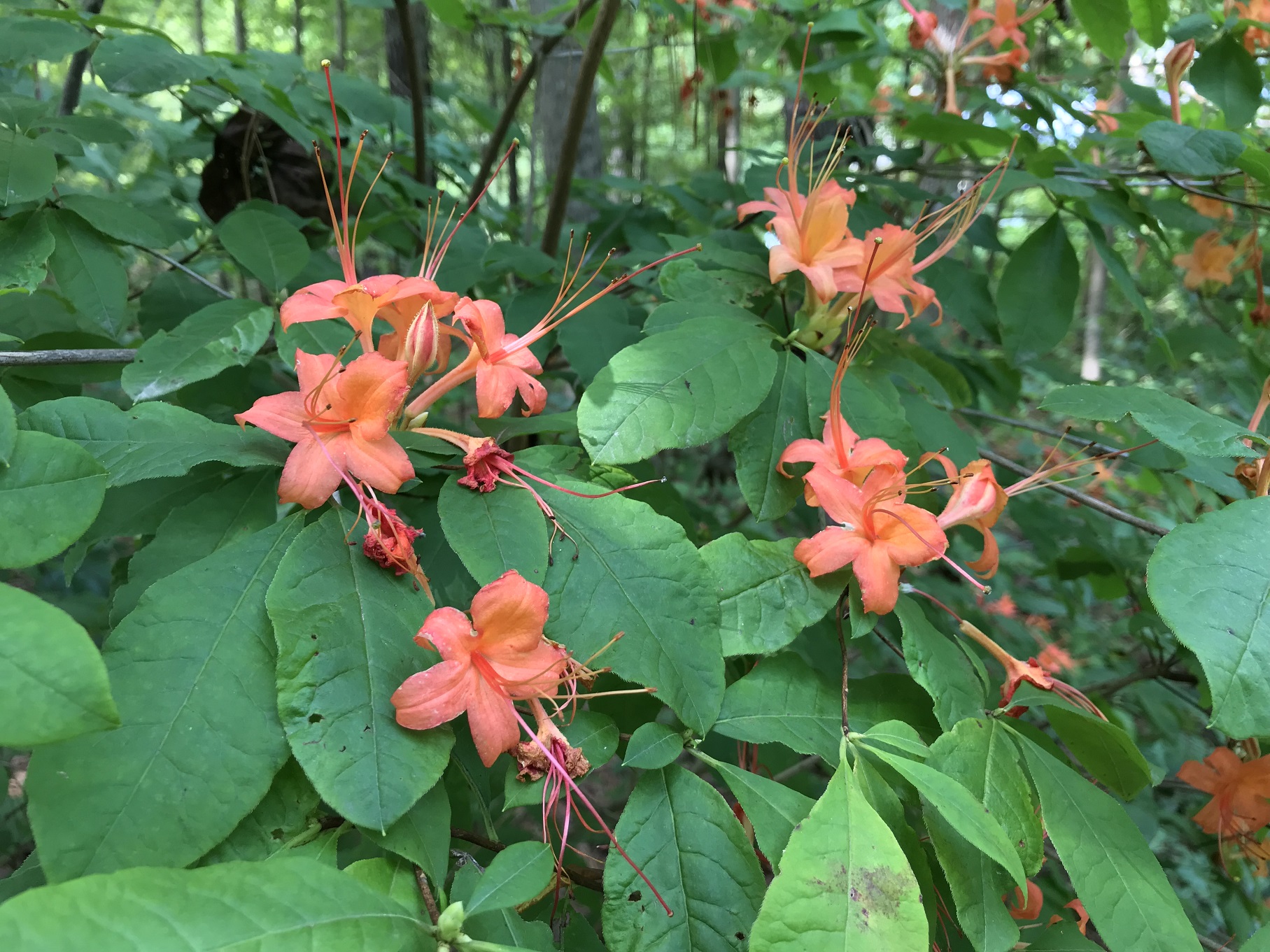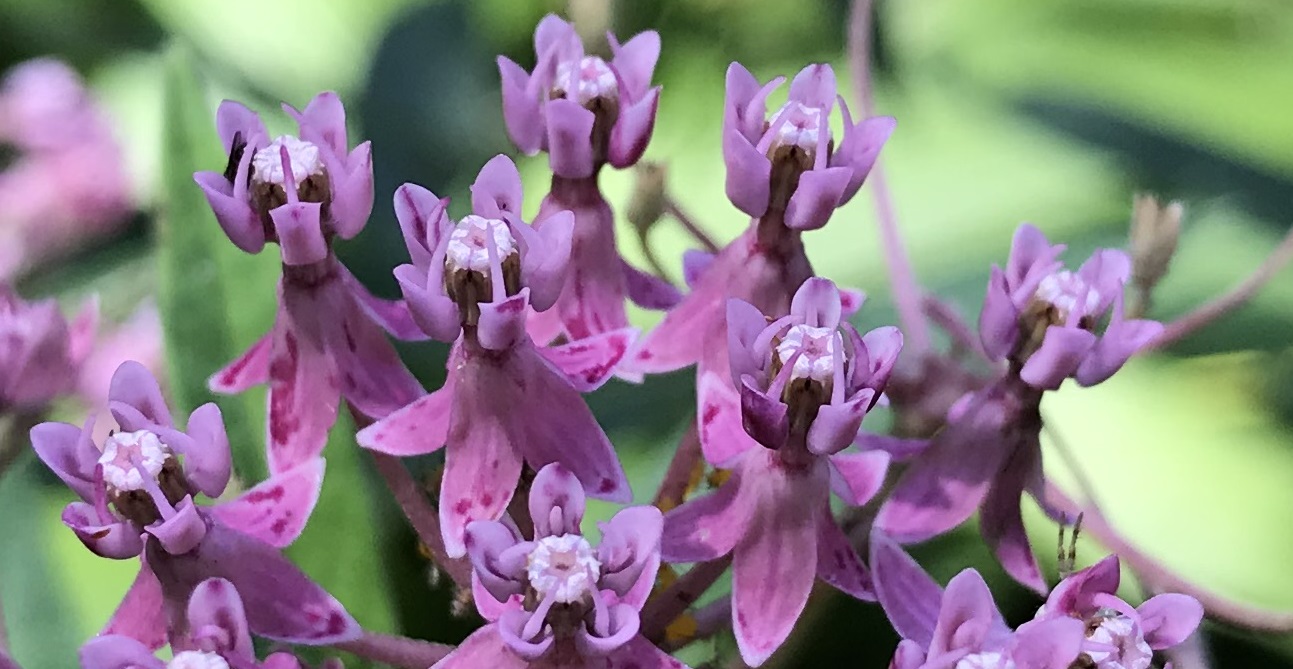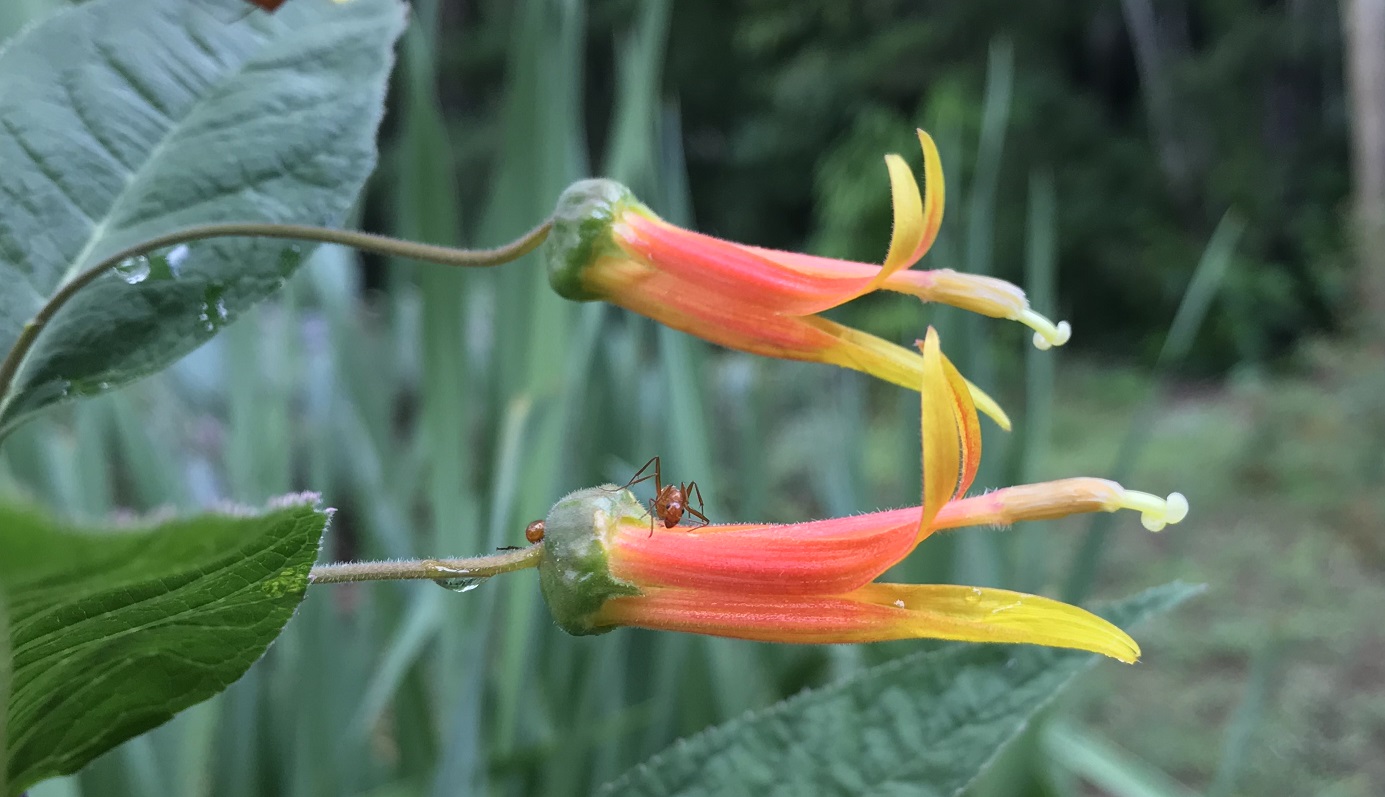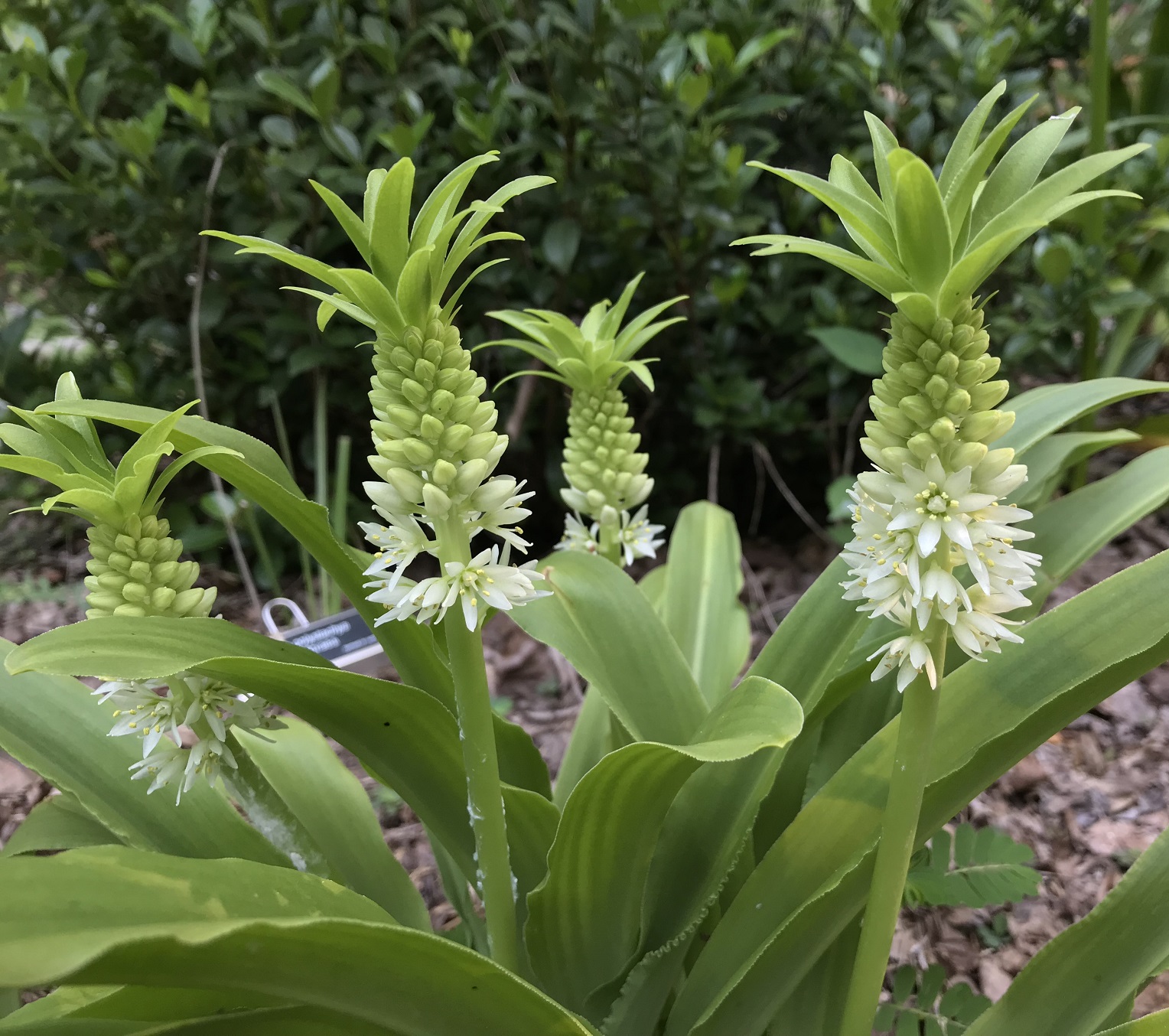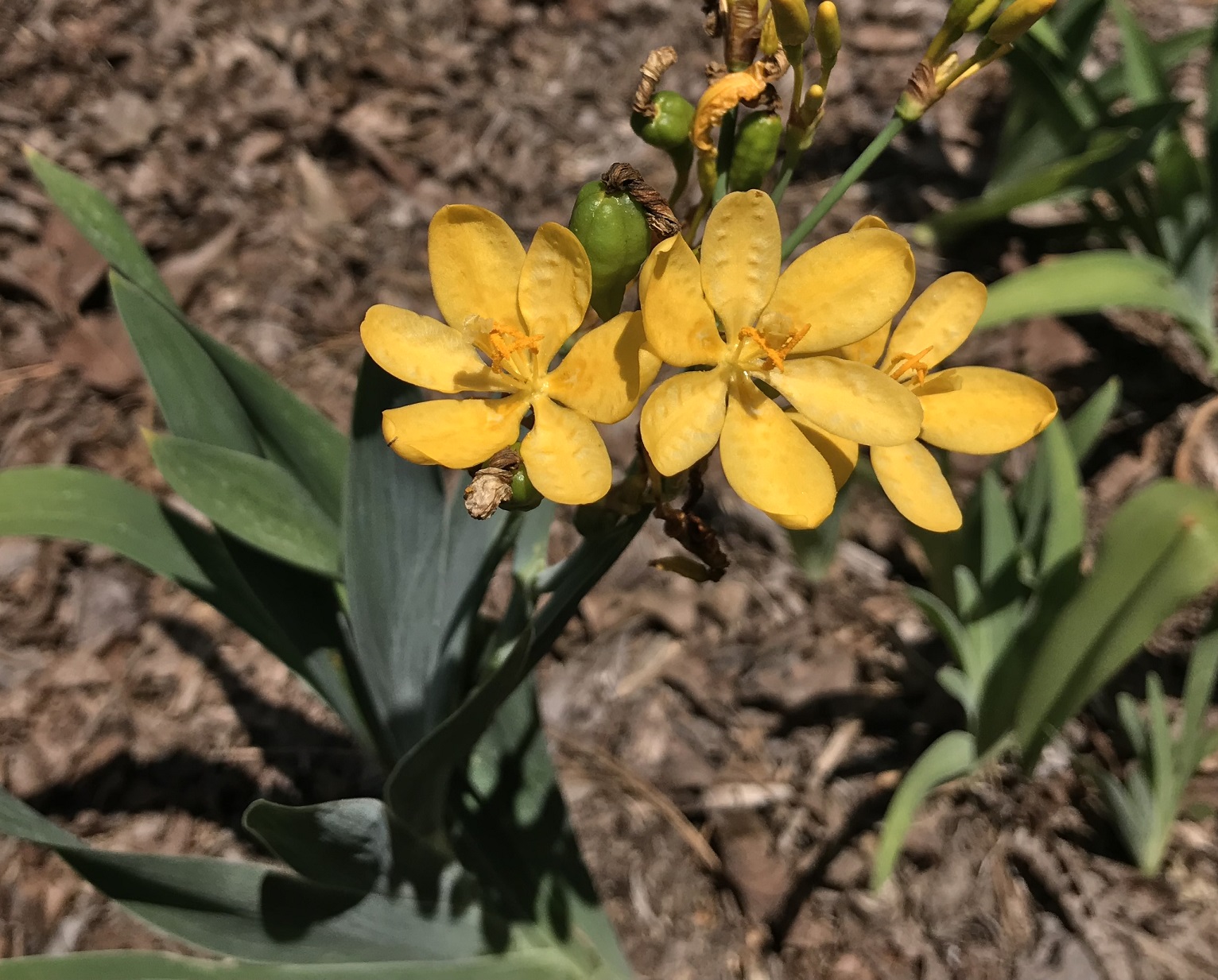
Note: The name of this hybrid has been updated to Paphiopedilum Lady Isobel in the orchid hybrid registry. I am leaving the old spelling, “Lady Isabel”, in this post, but read on to find out how and why the name was corrected.
Paphiopedilum Lady Isabel is a fantastic old lady’s slipper hybrid, a cross of two of the largest species in the genus. Its parents, Paphiopedilum rothschildianum and P. stonei (photo 3 here) are both narrow endemics found in the wild only on Borneo. P. rothschildianum grows at a couple of sites on the slopes of Mount Kinabalu, while P. stonei inhabits limestone cliffs near Kuching in southwest Sarawak. Given their physical similarity and natural habitat, it seems likely that the two species shared a common ancestor in the not too distant past, and P. Lady Isabel can be thought of as reuniting two divergent genetic lineages.
I generally prefer to grow orchid species, rather than hybrids, because I find that a good bit of the fun of this hobby lies in learning about the origins of the plants, their ecology and evolutionary history. Those details are lost in complex hybrids that mix highly divergent species and are consciously designed for floral display rather than adapted to a distinct habitat and pollinator. However, the human history associated with some old hybrids can substitute for natural history, and primary hybrids like P. Lady Isabel retain enough features of the original species to make them interesting to me.
When investigating the history of a hybrid orchid, my first stop is always the website of the Royal Horticultural Society, the current custodian of the orchid hybrid register (“Sander’s List”). The online International Orchid Register tells me that the cross of P. rothschildianum x P. stonei was registered as Lady Isabel by someone named “Statter” in 1897. That date alone is impressive. P. stonei was introduced into cultivation in 1860, but P. rothschildianum not until 1887 [1]. That means that Mr. Statter managed to bloom a cross of these two notoriously slow growing species just ten years after one of the parents first reached England. Lewis Knudson didn’t publish his method for asymbiotic germination of orchid seed on sterile agar until 1921, so at the time P. Lady Isabel was registered, producing new orchid hybrids was a matter of sprinkling seed at the base of a parent plant and hoping that the correct symbiotic fungus was present in the potting mix. Seedling yields were not high.
Searching on Google reveals that “Statter” was Thomas Statter, Esq., who lived at Stand Hall near Manchester. His extensive collection of orchids was featured in the October 1894 issue of Orchid Review [2], and both P. rothschildianum and P. stonei are mentioned in the article under the earlier genus name Cypripedium. Statter’s father, also named Thomas, was also an orchid enthusiast, and the name Thomas Statter appears numerous times in issues of The Gardeners’ Chronicle and Orchid Review from the late 1800s. (As an aside, isn’t it fantastic that we can search and read gardening magazines from the 1800s online?)
Sadly, it seems that Statter fell on hard times a few years later, and the April 29, 1905 issue of the Llandudno Advertiser reported on bankruptcy proceedings. Orchids are mentioned as part of his remaining assets.
What the RHS database doesn’t tell me is the meaning of the name “Lady Isabel.” Perhaps the hybrid is named after some flower of the late Victorian aristocracy, but who? One possibility is Lady Isobel Stanley, daughter of the 16th Earl of Derby and one of the first women to play ice hockey. Thomas Statter the elder and his father Robert Statter were land agents for the Earls of Derby, so there is a connection between the Statters and Stanleys. Statter had previously registered Paphiopedilum Lord Derby in 1895, so it is plausible that he would name a plant after a female member of the family. Cattleya Countess of Derby was registered by a different orchid grower in 1896, suggesting that the family had some connection to orchids and horticulture during the late 1800s. If the orchid was named for Lady Isobel, it seems that a spelling error has crept into the Orchid Register, but I found one early reference (possibly the earliest, judging by the September 1897 date) in the Journal of the Royal Horticultural Society [3] which renders the hybrid name as “Lady Isobel”.
Update 8/28/2019:
I emailed Julian Shaw, the current Orchid Registrar at RHS, to ask if he had any insight into my hypothesis about the naming of P. Lady Isabel. He replied that after some additional research, he has concluded that the plant was indeed named after Lady Isobel Stanley and has changed the spelling to “Lady Isobel” in the hybrid register.
Among other things, he told me that Thomas Statter was a member of the RHS Orchid Committee starting in 1895. That presumably affects the reliability of the 1897 reference to “Lady Isobel” that I noted above [3], because it occurred in the notes of the Orchid Committee.
One final note: that Orchid Review column from 1894 also mentions that the collections of both Thomas Statters were cared for by a Mr. Robert Johnson. I wonder how much of the credit for P. Lady Isobel should go to him, rather than Thos. Statter. A number of other gardeners are well known in orchid history and were recognized by their contemporaries. If we look back at the parents of Paphiopedilum Lady Isobel, we see that P. rothschildianum was named after Baron Ferdinand de Rothschild–banker, politician, art collector, and horticulturalist–one of the wealthiest and most influential men in Victorian England. But P. stonei was named after Robert Stone, who was the gardener of the orchid enthusiast John Day.
References
1. Hennessy, E.F. and Hedge, T.A. (1989) The Slipper Orchids, Acorn Books, Randburg, R.S.A.
2. anonymous (1894). The Stand Hall Collection. The Orchid Review 11(22): 291-293.
3. Veitch, H.J., Chair (1897). Orchid Committee, September 7, 1897. Journal of the Royal Horticultural Society 21: clxxxii.


